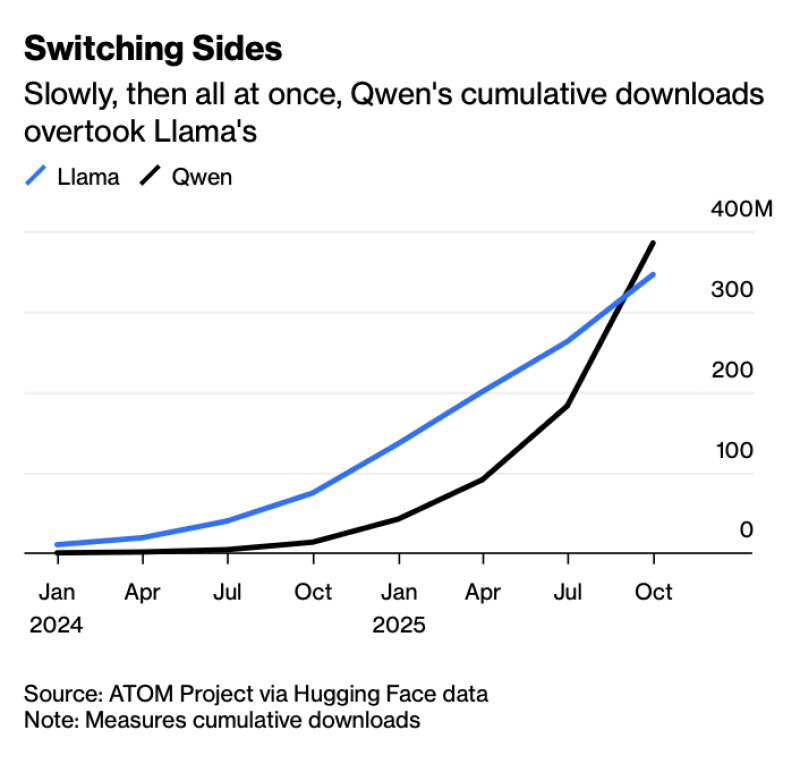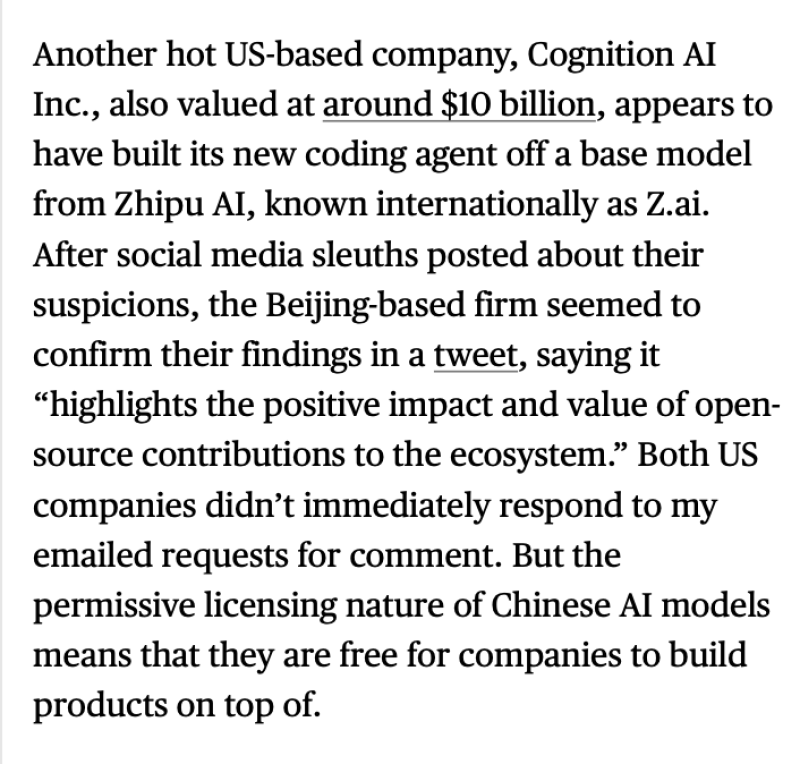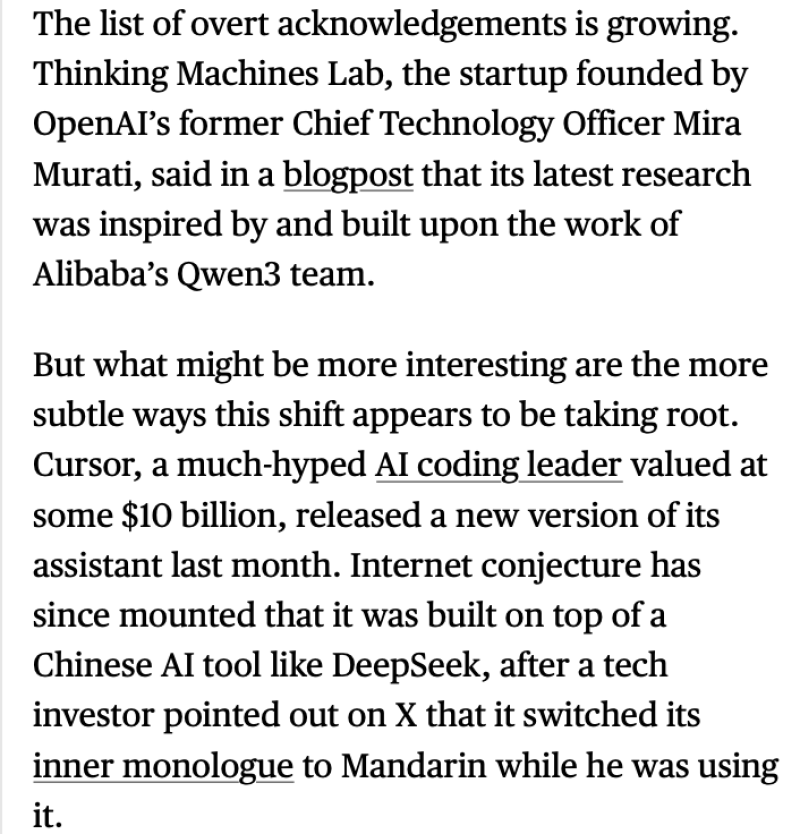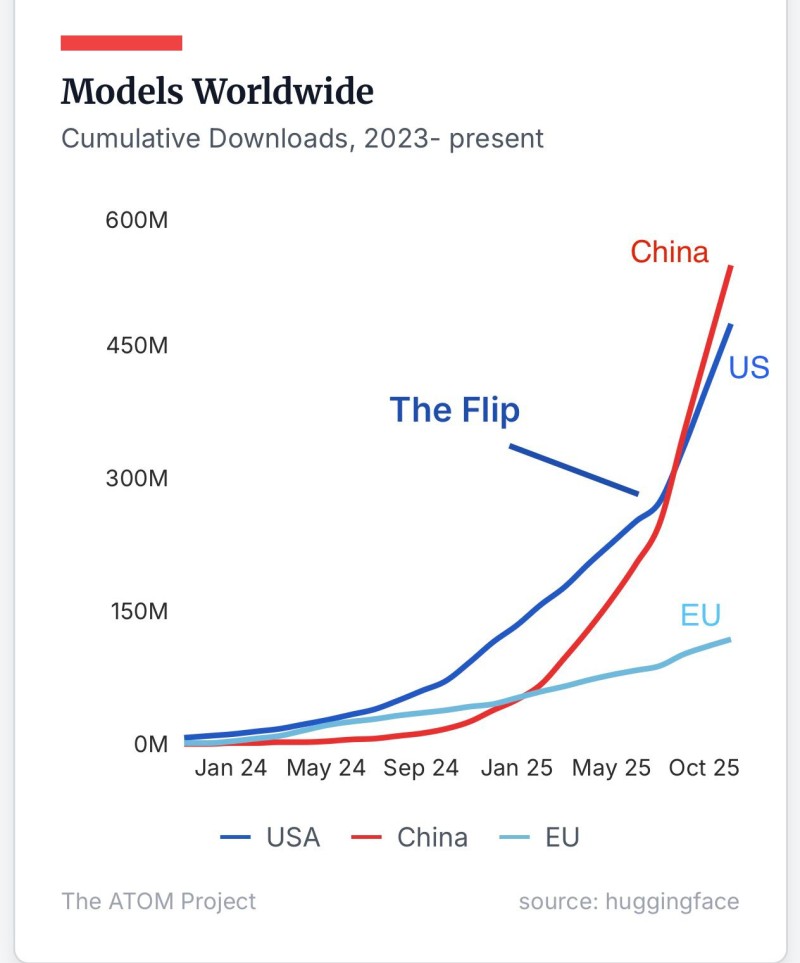The global open-source AI landscape is experiencing an unexpected transformation. What started as parallel growth between US and Chinese AI ecosystems has turned into a clear Chinese lead, challenging long-held assumptions about who's driving the future of accessible AI technology.
Recent data reveals that Chinese open-source AI models have overtaken US models in total downloads. These figures, supported by data from Hugging Face and The ATOM Project, show a sharp acceleration in China's growth throughout 2025.
The Numbers Tell the Story
Recent charts illustrate this dramatic reversal, painting a picture of a competitive landscape that has fundamentally shifted in just twelve months. One graph tracking Qwen versus Llama shows Qwen's downloads overtaking Llama's by mid-2025.

While Llama maintained a comfortable lead through 2024, benefiting from Meta's early mover advantage and strong developer community, Qwen's adoption rate exploded in 2025, ultimately pulling ahead. The trajectory suggests this isn't a temporary spike but rather a sustained acceleration driven by real technical and licensing advantages.

Another chart tracking worldwide model downloads shows China's steep climb crossing above the US curve around mid-2025 and continuing upward through October.

The steepness of China's growth curve is particularly striking—what took US models years to achieve, Chinese models accomplished in months. This accelerated adoption pattern mirrors China's broader tech strategy: enter markets later but scale faster through aggressive iteration and ecosystem building.

The gap between China and the EU appears even more pronounced, with Europe trailing significantly despite its strong research institutions and AI talent pool.
Why Qwen Won the Race
Download totals by region show China's models have hit 540 million downloads, surpassing the USA's 474 million and leaving the EU's 118 million far behind.
Download totals by region:
- 🇨🇳 China: 540M
- 🇺🇸 USA: 474M
- 🇪🇺 EU: 118M
Qwen's rise comes down to practical advantages developers care about. More permissive licensing than Llama enables unrestricted commercial use. Strong performance in coding, reasoning, and multilingual tasks makes it competitive where it matters. The modular, flexible architecture fits modern development workflows.
The impact shows in real products. Cognition AI's coding agent uses Zhipu AI's technology. Mira Murati's Thinking Machines Lab builds on Qwen3. Cursor AI, valued at $10 billion, appears to incorporate DeepSeek. Chinese models aren't just popular in Asia—they're powering Western AI tools.
What's Driving China's Momentum
China's lead stems from several strategic advantages. Permissive licenses remove adoption barriers. Rapid iteration cycles keep models improving faster than competitors. Massive domestic developer communities create network effects. Cost-efficient infrastructure enables competitive pricing. Growing global trust in non-US alternatives breaks American dominance.
The strategy itself differs fundamentally. Go players think ecosystem-wide. Chess players focus on defeating opponents. China appears to be playing Go—building influence through openness and speed rather than proprietary lock-in.
What This Means Going Forward
This shift fundamentally alters the global AI landscape. China now leads in open-source AI adoption, which directly influences research directions, developer tooling choices, and deployment patterns worldwide. US startups increasingly build on Chinese foundations because performance and licensing make it the practical choice. Competition has intensified dramatically as Chinese models—free, powerful, and rapidly improving—pressure Western alternatives like Llama. The geopolitical implications are significant, as open-source success translates directly into developer mindshare and technological leadership.
 Saad Ullah
Saad Ullah

 Saad Ullah
Saad Ullah


